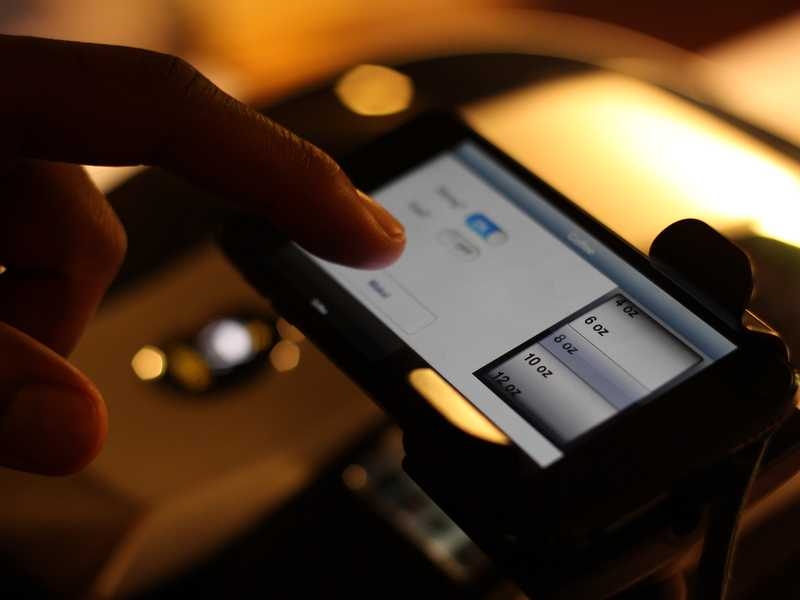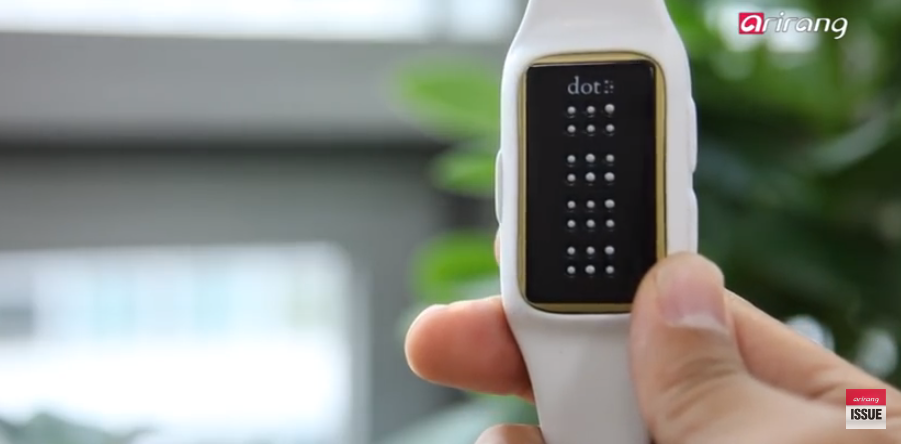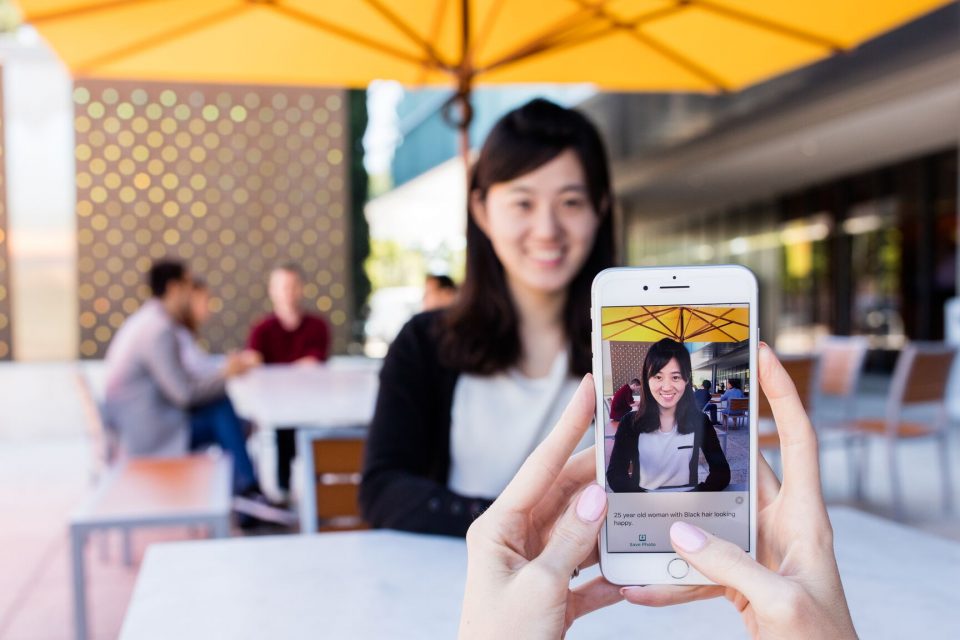Discover Ingenious Devices Developed for the Aesthetically Damaged
The advancement of cutting-edge tools for the visually damaged represents a considerable advancement in availability and independence. Technologies such as smart glasses with AI abilities and mobile applications made to offer acoustic summaries are reshaping everyday experiences for customers. Furthermore, wearable tools that employ haptic feedback improve ecological recognition, while modern-day Braille technologies use brand-new means to engage with text. As these tools proceed to progress, their influence on the lives of those with aesthetic disabilities elevates crucial questions concerning the future of inclusivity and freedom in numerous elements of life. What exists ahead in this technological landscape?
Smart Glasses for Navigating

Smart glasses designed for navigation are changing the way aesthetically damaged people engage with their environment. These sophisticated devices make use of a mix of camera modern technology, expert system, and auditory responses to offer real-time information about surroundings. By employing barrier discovery systems, clever glasses can alert individuals to possible hazards, enabling more secure movement in both unfamiliar and familiar setups.
The assimilation of GPS technology further improves navigation capacities, allowing individuals to receive acoustic directions as they move. This hands-free approach not only fosters self-reliance however likewise encourages aesthetically damaged people to browse city landscapes with raised self-confidence. Additionally, many smart glasses are outfitted with features that determine landmarks and street signs, providing contextual info that boosts the user experience.
In addition, the development of these gadgets is continually progressing, with firms functioning to boost the precision of item recognition and expand the range of navigational features. As smart glasses become much more affordable and accessible, they hold the prospective to dramatically transform day-to-day live for aesthetically damaged customers. Ultimately, these cutting-edge devices represent a crucial step towards inclusivity, offering improved movement and a greater feeling of autonomy for people browsing the globe around them.

Mobile Apps for Daily Living
Exactly how can mobile applications improve the day-to-days live of visually impaired individuals? Mobile apps are reinventing the method aesthetically damaged customers browse their settings, handle day-to-day tasks, and access information. These applications supply vital support through various functionalities, promoting freedom and enhancing high quality of life.
A number of ingenious mobile apps are developed specifically for daily living. Applications like Be My Eyes connect aesthetically impaired individuals with sighted volunteers using video clip telephone calls, permitting them to obtain real-time assistance with tasks such as checking out tags or browsing unknown rooms. In A Similar Way, Seeing AI, created by Microsoft, makes use of man-made intelligence to describe surroundings, read text, and identify objects, successfully transforming a smartphone into a powerful tool for day-to-day support.
Additionally, navigating apps customized for the aesthetically impaired, such as Aira and BlindSquare, use audio-based directions and environmental info, making it possible for individuals to traverse their environments securely and with confidence. Beyond navigation and instant support, mobile apps additionally sustain organization and task monitoring, with functions that aid customers set suggestions, create order of business, and track visits. In summary, mobile applications work as indispensable resources, equipping visually impaired people to lead more independent and meeting lives.
Wearable Technologies for Aid
Empowerment through technology is increasingly obvious in the world of wearable tools made to assist aesthetically impaired individuals. These innovative tools incorporate flawlessly right into day-to-day live, improving navigating and giving essential comments to customers. Wise glasses furnished with electronic cameras can read and acknowledge faces text aloud, allowing users to connect more confidently in professional and social settings.
One more noteworthy improvement is the use of haptic responses systems in wearable tools. These systems make use of vibrations or various other responsive signals to convey information regarding the individual's environment, such as obstacles or adjustments in terrain, improving flexibility and security. Wearable innovations likewise consist of wristbands that link to smartphones, signaling individuals to notifications via refined vibrations, therefore enhancing connection without reliance on aesthetic hints.
As these innovations remain to evolve, they are not just enhancing independence for aesthetically damaged individuals yet likewise fostering a higher sense of addition in society. By bridging the void between obstacles dealt with in daily living and the possibility for autonomy, wearable innovations function as critical devices in the mission for equal rights and empowerment for those with visual impairments.
Audio Summary Devices
Sound description devices play a vital role in boosting availability for visually impaired people, providing them with the capability to engage with visual media. Mobility aids for visually impaired users. These devices provide narrated summaries of essential aesthetic elements in films, tv shows, and live efficiencies, making sure that users can completely understand the context and emotions communicated via visuals
Sound description can be incorporated into different systems, including streaming solutions, cinema testings, and live movie theater. Many preferred streaming services currently consist of audio description as an ease of access attribute, allowing visitors to select it conveniently. Along with traditional media, specialized applications likewise exist, giving audio descriptions for art events, museums, and various other social events.
The efficiency of audio summary rests on the skill of the storytellers, that should share visual information succinctly without interfering with the initial sound. Technologies in this field are also paving the means for more individualized experiences, where customers can adjust the level of detail and pacing according to their choices.
Braille Innovations and Instruments
Braille advancements and gadgets have actually considerably transformed the means aesthetically impaired individuals engage navigate to this website with message and information. Modern developments have actually led to the growth of functional tools that enhance literacy and independence amongst individuals.
Moreover, mobile Braille notetakers incorporate conventional Braille input with contemporary capabilities, facilitating note-taking, scheduling, and paper editing and enhancing on the move. Speech-to-text devices for low vision. These portable tools often feature text-to-speech capabilities, bridging the gap between Braille and acoustic details
Additionally, cutting-edge Braille printers have actually arised, enabling individuals to produce Braille labels, documents, and educational products successfully. This access fosters better participation in academic and professional atmospheres, ultimately advertising inclusivity.
Moreover, research right into smart Braille technologies remains to expand. Instruments that include expert system are being discovered to supply real-time navigating help and contextual information, enhancing the customer experience in diverse settings. On the whole, these advancements show a commitment to encouraging visually damaged people through modern technology, ensuring they can easily gain access to and engage with the globe around them.

Verdict
The improvement of ingenious devices for the vision near me visually damaged dramatically boosts independence and high quality of life. These technologies not just foster higher incorporation however also advertise freedom in everyday activities, eventually contributing to a much more available and fair culture for visually impaired people.
As smart glasses come to be much more obtainable and affordable, they hold the possible to significantly change day-to-day life for visually impaired customers. Mobile apps are transforming the means visually impaired individuals browse their environments, handle everyday jobs, and access info. Applications like Be My Eyes attach aesthetically impaired users with sighted volunteers by means of video clip calls, allowing them to get real-time help with jobs such as reviewing labels or navigating unfamiliar spaces.Additionally, navigation apps tailored for the visually impaired, such as Aira and BlindSquare, use audio-based instructions and ecological Get More Info details, making it possible for users to traverse their surroundings safely and confidently.The development of ingenious tools for the visually impaired substantially improves self-reliance and high quality of life.